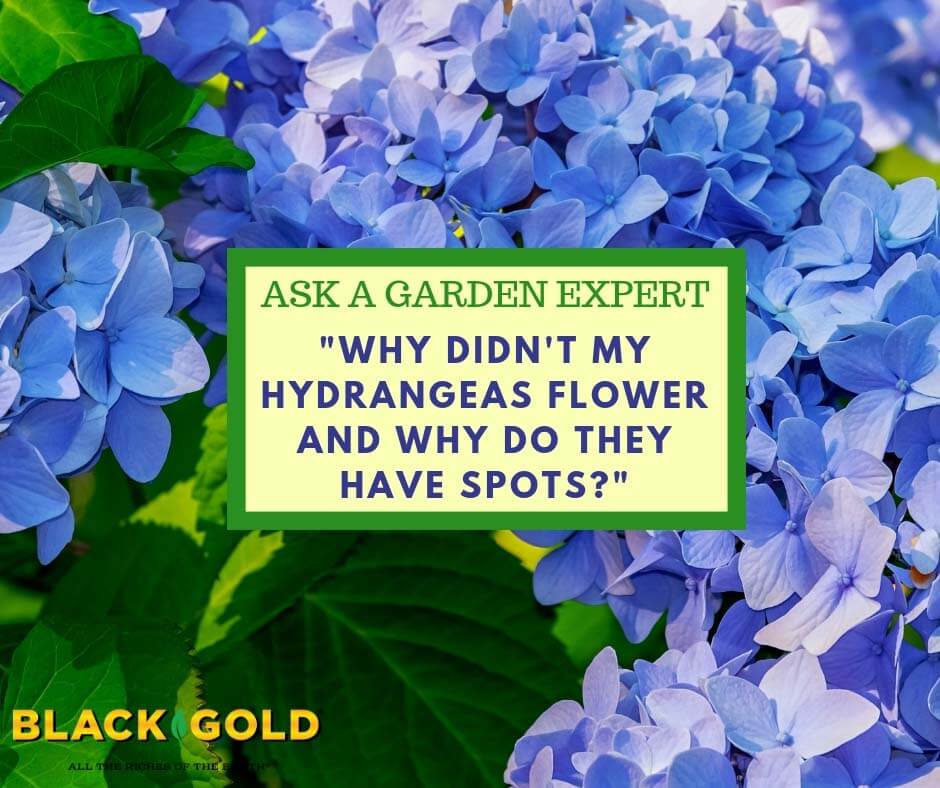
“My hydrangeas didn’t flower this year and also have “black/brown” spots on the leaves. Any ideas on what to do?” Question from Debra of Saint Inigoes, Maryland
Answer: Mophead or lacecap hydrangeas (Hydrangea macrophylla) are prone to fungal leaf diseases when there is excess moisture and the shrubs are poorly aerated. And, there are a couple of reasons why hydrangeas fail to bloom.
Hydrangea Leaf Fungal Diseases
Do the spots on your plants look small, roundish, and purplish brown with lighter centers? If so, then they have the common disease, Cercospora leaf spot. It is not deadly, but it is unsightly and can eventually cause leaf drop. If your spots are larger, greyish, and more irregular, then your shrubs are suffering from Anthracnose spot. This appears when weather is excessively rainy and hot.
Both diseases take hold in spring but do not become visually apparent until later in the season. The best way to manage them is to clean old and diseased leaves diligently, and selectively prune to help aerate plants, which will reduce the onset of the disease. Also, refrain from overhead watering, which can further spread leaf spot.
Remove select stems down to the ground within your hydrangeas to encourage airflow, and if only a few leaves are spotty, remove them as you see them. Any fungicides you might use would be strong and not 100% effective at this stage, so I do not recommend them. In fall, be sure to remove all of the leaves that fall to the ground, and apply a fresh layer of mulch around them. Next year, keep an eye on your plants and remove any spotty leaves as you first see them.
Some hydrangeas resist spot diseases. These include the varieties ‘Veitchii’ (whitish flowers), ‘Pretty Maiden’ (soft pink flowers), ‘Ayesha’ (pink or blue white-centered blooms), and ‘Tovelit’ (brilliant pink or violet-blue flowers). If you continue to have lots of trouble, remove your hydrangeas and plant one of these.
Why Hydrangeas Fail to Bloom
Leaf spot will stress plants and can reduce bud set, but it should not totally keep hydrangeas from blooming. Two of the most common reasons hydrangeas fail to bloom in a season are 1) improper pruning or 2) winter dieback. If you prune Hydrangea macrophylla, then it is important to cut back the old blooms right after they flower. Otherwise, you may cut next year’s flower buds off. (Click here on a full tutorial on how to prune many different types of hydrangeas.) The same thing can happen if your shrubs suffered winter dieback. Sometimes late freezes damage the flower buds in spring as well.
I hope that this information helps. Please let me know if you have any additional information.
Jessie Keith
Black Gold Horticulturist
